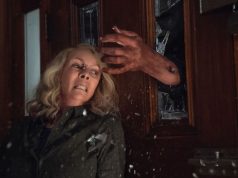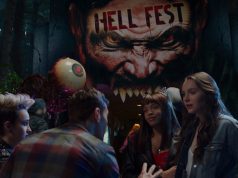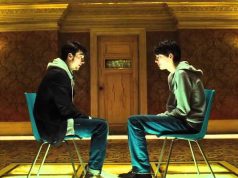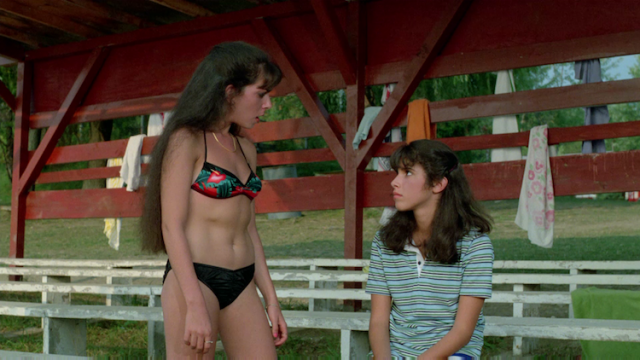
I never went to summer camp as a kid. Neither did anyone else I knew. As far as I could tell, it was one of those things that movie adolescents did that real kids didn’t, like showering after high-school gym, or calling it “gym” rather than “P.E.” Of course, what I knew about summer camp from movies, TV shows, and Allan Sherman songs was that the food was terrible, the counselors were mean, poison ivy was rampant, and a lot of people got murdered. So I don’t know that I really missed out on much.
“Sleepaway Camp,” a bad film from 1983, encapsulates the summer camp experience very nicely, with the added bonus that many of the murder victims are only about 14 or 15. Slashing up older teens in films like “Halloween” and “Friday the 13th” was all the rage in the early 1980s, but Robert Hiltzik, whose entire movie career consists of writing and directing “Sleepaway Camp” and one straight-to-video sequel, figured there was no reason to spare younger adolescents from the terror and mayhem. It’s a movie that slaughters the whole family!
By the way, this movie has a “cult following,” which has led some people to believe that it is good. This is nonsense. Having a cult following doesn’t make something good. Jim Jones and Charles Manson had cult followings, too, but you don’t see anyone issuing anniversary DVDs of their work.
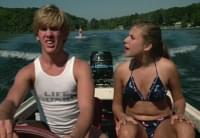
This being a slasher film, we are obligated to begin with a prologue set several years before the main action. (It’s in the rule book.) In this case, it’s a dad and his young son and daughter lounging in a lake across from Camp Arawak, where the kids hope they’ll be able to go someday when they’re old enough to be murdered. Meanwhile, there’s an idiot teenager towing a waterskier with a motorboat, and he lets his girlfriend drive for a while, whereupon they both stop looking at what they’re doing and run over the dad and one of the kids while the dad’s boyfriend watches from the shore. It is not clear at this point that the man is the dad’s boyfriend, nor is it clear which of the two kids gets hit by the boat, but “Sleepaway Camp” is not a movie that concerns itself with making things clear.

Now it’s eight years later. A sullen girl of about 13 named Angela (Felissa Rose) and a regular boy about the same age named Ricky (Jonathan Tierston) are being sent to Camp Arawak. Is one of them the kid who didn’t get killed in the prologue? Or did they both not get killed, and here they are now? The prologue must have mentioned the kids’ names once, in passing, but we weren’t paying attention. We were waiting for the motorboat to run them over. So we don’t know who these kids are. We don’t even know for sure that they’re actually connected to the prologue. The movie already isn’t very good, so it wouldn’t surprise us if it totally botched this, too.
Eventually we piece it together. Angela survived the boat accident; Ricky is her cousin. They live with Ricky’s mother, Aunt Martha (Desiree Gould), who behaves in a highly stylized pseudo-schizophrenic manner, like an untalented actress doing improv when the audience suggestion was “Crazy lady sending her kids to camp!” Why would she send Angela to a camp situated on the same lake where her brother and gay dad were killed? I don’t know. It’s just what she does.
At Camp Arawak, as the kids scamper out of the buses and into their cabins, the adult staff members stand in a group and leer at them. One of them, the chef, Artie (Owen Hughes), talks about having sex with the young campers, the younger the better. His fellow employees consider this line of thought the pinnacle of hilarity. Artie tries to molest Angela, only to be interrupted by Ricky, who is very protective of his sour-faced sister-cousin. Moments later, Artie is horrifically burned by a huge pot of boiling water. The movie goes out of its way not to show us who pushed the pot over on him, but the obvious culprit would be Angela, with Ricky as a backup culprit, should Angela be unable to fulfill her duties as obvious culprit.

Even before she almost got molested and then possibly tried to murder her attacker, Angela was not a lot of fun to be around, and not just because she looks like Sarah Silverman. She doesn’t eat or speak or smile. She doesn’t do any of the usual teen-girl activities — no gossiping, no sobbing, no emotionally abusing the unpopular girl until she starts cutting herself, none of that. In fact, Angela IS the unpopular girl, targeted by super-mean Judy (Karen Fields), who is Angela’s doppelganger, which surely doesn’t help her mood.

Also not helping anyone’s mood: the never-ending cavalcade of tiny, upsetting shorts and half-shirts worn by the campers. I have not seen imagery this disturbing since Ernest Borgnine’s sex tape.
Anyway, the movie follows a fairly standard formula: someone exhibits cruelty toward Angela, and then that person is murdered. One boy is killed in a toilet stall after the unseen assailant bars the stall door shut and drops a hive of angry bees in through the window. The boy is too stupid to crawl under the stall door or out the window, so I say he deserves to die at the stingers of a thousand unusually aggressive and suicidal honeybees. (Seriously, you’d think he’d been teasing THEM the whole movie, not Angela.)
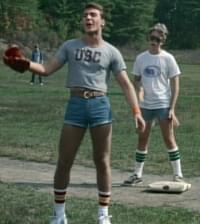
The camp’s owner, an old guy named Mel who smokes a cigar and wears a gold necklace and knee-high black socks, is intent on keeping the deaths quiet, as the slaughter of young innocents is bad for business (unless your name is Rob Zombie). Based on no evidence whatsoever, he concludes that Ricky is the killer, and beats Ricky senseless over it. If you like movies where elderly men pummel 13-year-old boys in the face with their fists, then hie thee to Blockbuster and obtain “Sleepaway Camp” forthwith! Otherwise, please continue being a productive member of society.
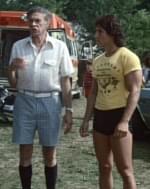
Here is where I reveal the super-shocking top-secret surprise twist ending of “Sleepaway Camp.” These will be “spoilers,” insofar as a movie full of non-actors non-acting their non-dialogue can really be “spoiled.”
Remember, while all the signs point to Angela being the killer, the movie has been very careful not to actually show the murderer’s face. So in the end, it is very startling to learn that the killer is … Angela. Yeah, her. Like we thought all along. Up yours, movie.

But wait! It turns out that not only is Angela the killer, but Angela is also actually a boy. We learn this because after her latest murder, Angela has taken off her clothes and is sitting on the beach, her boy parts a-dangling. In a dizzying series of flashbacks inflicted upon us from out of nowhere, we learn that it was the boy who survived the boat accident, not the girl, and crazy Aunt Martha — remember her? — decided to raise the poor lad as a girl, since she already had a son and everything.
The movie’s viewpoint is that this sudden revelation explains why Angela is crazy and has decided to murder everyone. My viewpoint is that this is stupid. The movie doesn’t suddenly become awesome just because it has a random, nonsensical surprise ending. If I came to your house and tormented your family and murdered your pets and befouled your carpeting, then revealed to you that I was raised as the wrong gender, would you say, “Oh! Well, that changes everything, then!”? I submit that you would not. This unhappy element of my upbringing would bear no relevance to the matter at hand. It might make you remember me a little better — sure, Snider, the guy who committed numerous felonies before unveiling his surprise vagina — but it doesn’t explain anything.
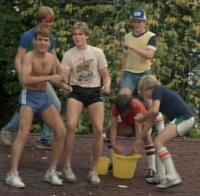
Because of this ending, “Sleepaway Camp” is well known in horror circles, though I have yet to hear anyone tell me that it actually frightened or entertained them in anything but an ironic fashion (as in, “Let’s laugh at how cheesy this acting is, and how thick the Brooklyn accents are”). With a different ending — i.e., one that makes sense — it would have been just another dumb slasher film and another reason not to go to summer camp.
(Note: This movie is better than “Daddy Day Camp.”)
— Film.com


